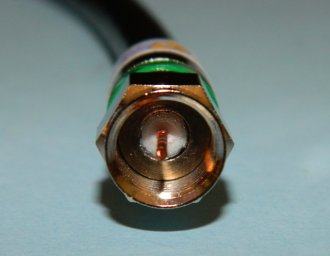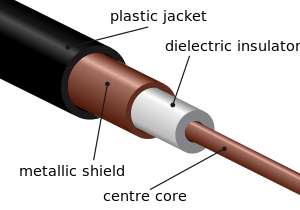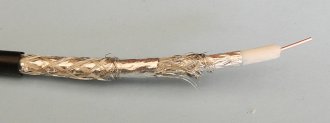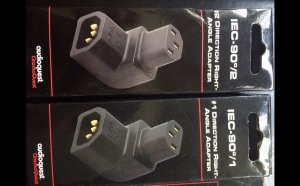
Coaxial cable for digital TV antenna
 Have you been making use of the most readily useful cable to do the job? You have heard terms like RG59, RG6, RG11, and Slim RG59 you don't know what they required. There is actually an actual difference between these kinds of cables plus this show, we are going to explain every little thing discover about picking a cable.
Have you been making use of the most readily useful cable to do the job? You have heard terms like RG59, RG6, RG11, and Slim RG59 you don't know what they required. There is actually an actual difference between these kinds of cables plus this show, we are going to explain every little thing discover about picking a cable.
What's a coaxial cable?
Everyone understands what a coaxial cable is, appropriate? It really is that fat cable that gets into your cable package, satellite receiver, or into the TV from an antenna. It looks distinct from an audio cable or headphone cable largely because of its heft.
There is a little more to a coaxial cable than that. A coaxial cable holds its voltage internally "core" cable, and it is enclosed by layers of shielding that end any signal leakage. 1st layer, the dielectric, provides length between the core together with external levels, also some insulation. Next layers, collectively labeled as the guard, keep electric impulses and radio transmissions out and keep any stray impulses in. Finally, a jacket manufactured from flexible plastic or plastic protects the complete cable. Maintaining the complete cable similar size, and maintaining away stray signals, are very important.
 Another important characteristic is the fact that in a coaxial cable, unlike a headphone or sound cable, the core can be used included in the connector. Therefore, it will make a primary connection. It will help keep carefully the signal since strong as you can.
Another important characteristic is the fact that in a coaxial cable, unlike a headphone or sound cable, the core can be used included in the connector. Therefore, it will make a primary connection. It will help keep carefully the signal since strong as you can.
Coaxial cable is perfect for broadcast television and satellite indicators, which carry a huge amount of information and generally are very responsive to external interference. A satellite signal cable must carry indicators from 2MHz to 3, 000MHz. Compare by using an audio cable which simply has to carry indicators to 2 MHz. That is a massive number of information.
Generally, coax cables will likely be referred to by a signal such as for example RG6/U. RG is an extremely old specification that some people think is the "broadcast Guide, " a military guidebook. In addition it could possibly be a military requirements from World War II for cable designated for radio and telegraph usage. Any cable marked "/U" is perfect for universal usage, as opposed to those cables especially utilized for computer system information or any other specified utilizes. In case the cable is not marked "/U" which is ok too.
 RG11 Cable
RG11 Cable
Let's focus on a quick word about RG11 cable. You aren't very likely to come across RG11 cable until you're digging around in the lawn. It's designed for long works rather than for in-home usage. It looks as with any various other coax but it is about two times as thick.
RG6 Cable
That is Quad Shielded RG6 cable. We'll mention different sorts of shields in a later article.
RG6 cable may be the perfect choice for cable and satellite. It is thin adequate that it could be coiled or fold enough to get into a wall surface or roof, but carries enough shielding that it can be properly used for works as much as 100 yards inside your home beneath the right circumstances. This really is largely due to the width of this dielectric, 4.7mm while the usage of a double layer of protection.
RG59 Cable
This will be a customer class cable that conforms to your RG59 standard
RG59 cable had been made use of thoroughly in houses before cable or satellite. It is well-suited to carrying signals from a terrestrial antenna but not well suited to very long works through home, particularly if you're utilizing most of the frequencies that today's cable or satellite system makes use of.
Through the outside, RG59 cable appears nearly the same as RG6. A cable made "to specs" is significantly less than 1mm thinner than an RG6 cable, and certainly will feel similar with its weight and rigidity. But RG59 cables are just required to have an individual exterior shield level, while RG6 need at least a double layer. Some RG59 cables have another guard, but like the image above it may be very slim.
RG59 cable is well-suited to over-the-air antenna use and is perfect for any case where frequencies don't exceed 1000MHz, eg cell phone antennas.
"Thin RG59"
Periodically, you'll see a cable that carries equivalent connections as an RG59 cable but appears much thinner. These types of cables could have some rigidity for them in comparison to an audio cable but can typically be only 3mm dense. It is described in literary works as "thin coaxial" or "slim RG59." In fact this isn't a real standard. Such a cable is built to exactly the same general requirements as an RG59 cable - an individual shield is generally made use of - although dielectric is merely 1mm dense, lower than one-third the depth of a normal RG59 cable.
RELATED VIDEO



Share this Post
Related posts
Best coaxial cable for HDTV
> the cabeling in our house ended up being finished with RG-59 coax cables, also the rooftop attenna. We are starting…
Read MoreOutdoor Antennas for digital TV
New advancements in efficiency & dimensions. 1st brand new HD TV antennas optimized the post 2009 digital frequencies…
Read More










